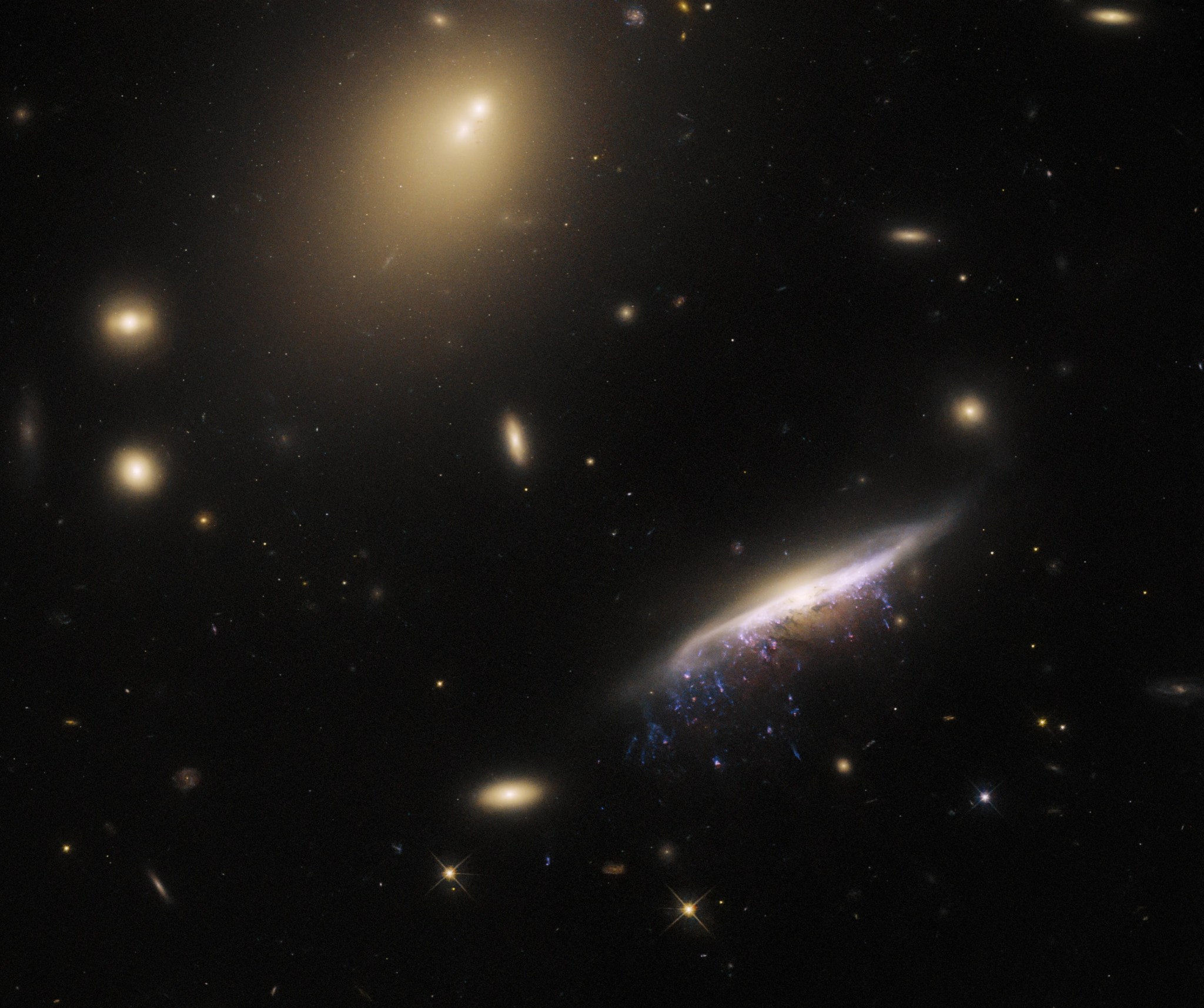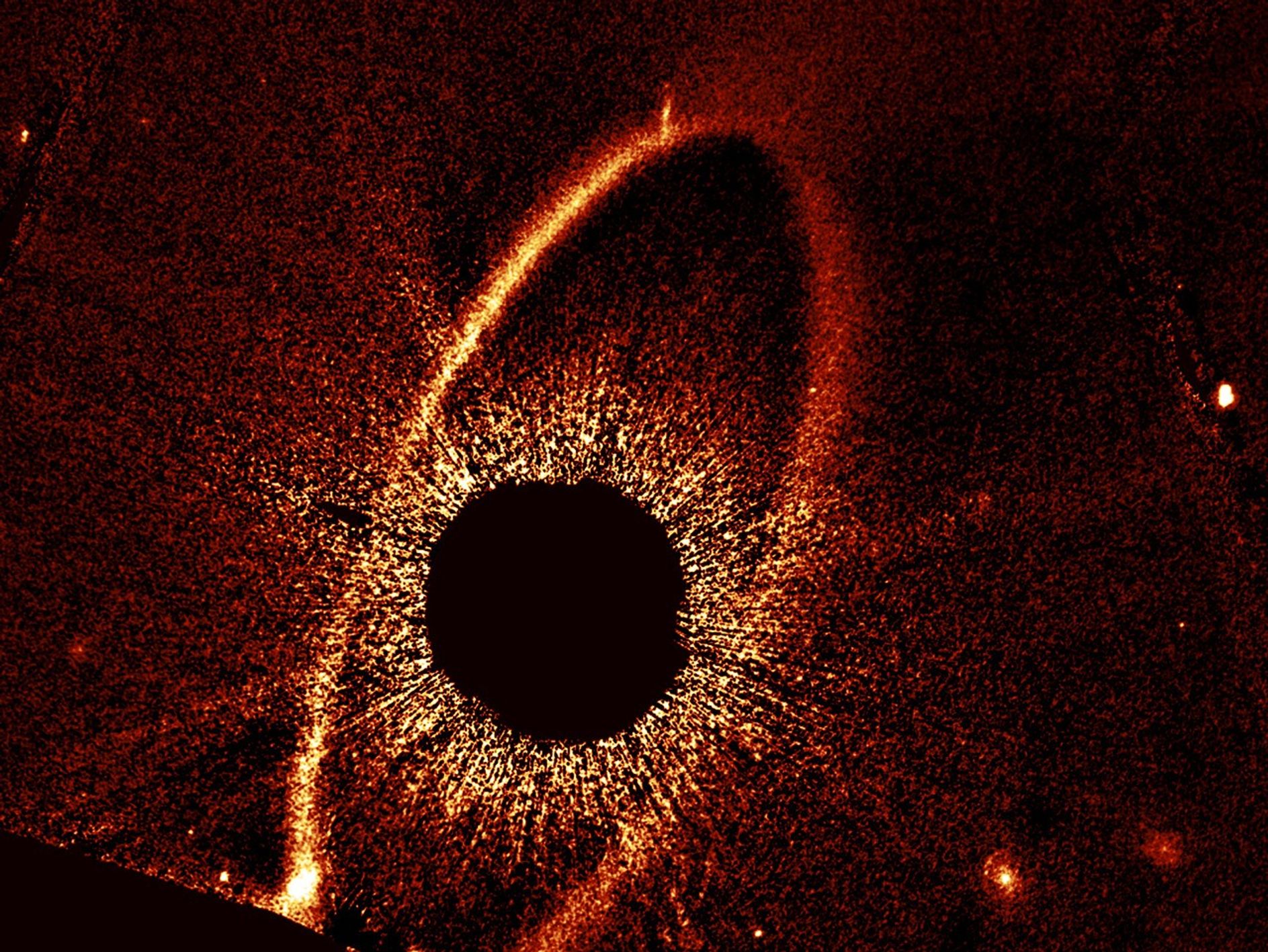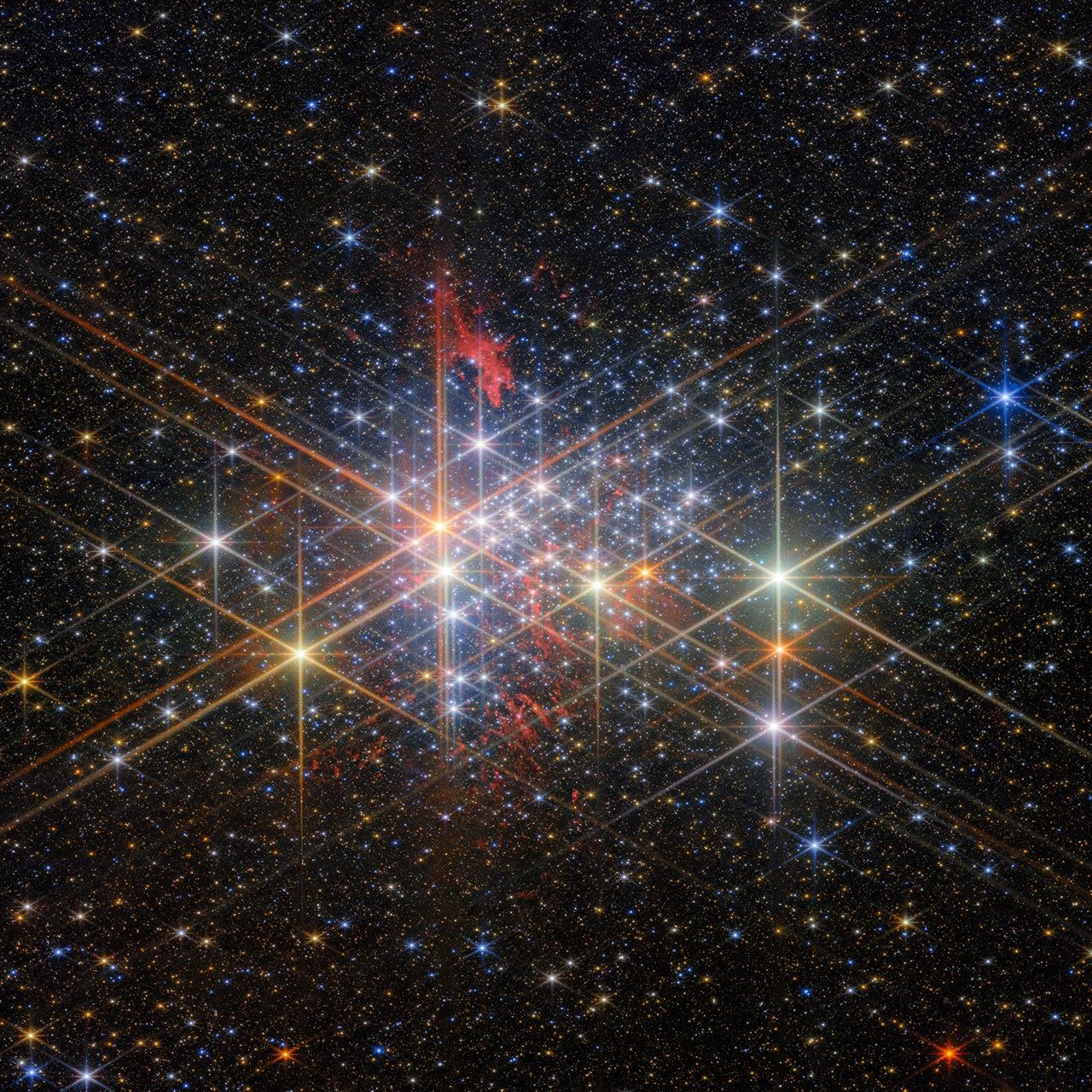The galaxy JW100 (lower right) features prominently in this image from the NASA/ESA Hubble Space Telescope. The streams of star-forming gas dripping from the disk of the galaxy like streaks of fresh paint are formed by a process called ram pressure stripping. Their resemblance to dangling tentacles led astronomers to refer to JW100 as a ‘jellyfish’ galaxy. JW100 is over 800 million light-years away, in the constellation Pegasus.
Ram pressure stripping occurs when galaxies encounter the diffuse gas that pervades galaxy clusters. As galaxies plow through this tenuous gas, it acts like a headwind, stripping gas and dust from the galaxy and creating the trailing streamers that prominently adorn JW100. The bright elliptical patches in the image are other galaxies in the cluster that hosts JW100.
Toward the top of this image are two bright blotches surrounded by a remarkably bright area of diffuse light. This is the core of IC 5338, the brightest galaxy in the galaxy cluster. IC 5338 is an elliptical galaxy with an extended halo, a type of galaxy called a cD galaxy. These galaxies likely grow by consuming smaller galaxies, so it’s not unusual for them to have multiple nuclei since it can take a long time for their cores to be absorbed. The bright points of light studding the galaxy’s outer fringes are a rich population of globular star clusters.
This observation took advantage of Hubble’s Wide Field Camera 3 and its capabilities. The data is part of a sequence of observations designed to explore star formation in the tendrils of jellyfish galaxies. These tendrils represent star formation under extreme conditions and could help astronomers better understand the process of star formation elsewhere in the universe.
Text credit: European Space Agency (ESA)
Media Contact:
Claire Andreoli
NASA's Goddard Space Flight Center, Greenbelt, MD
301-286-1940


































